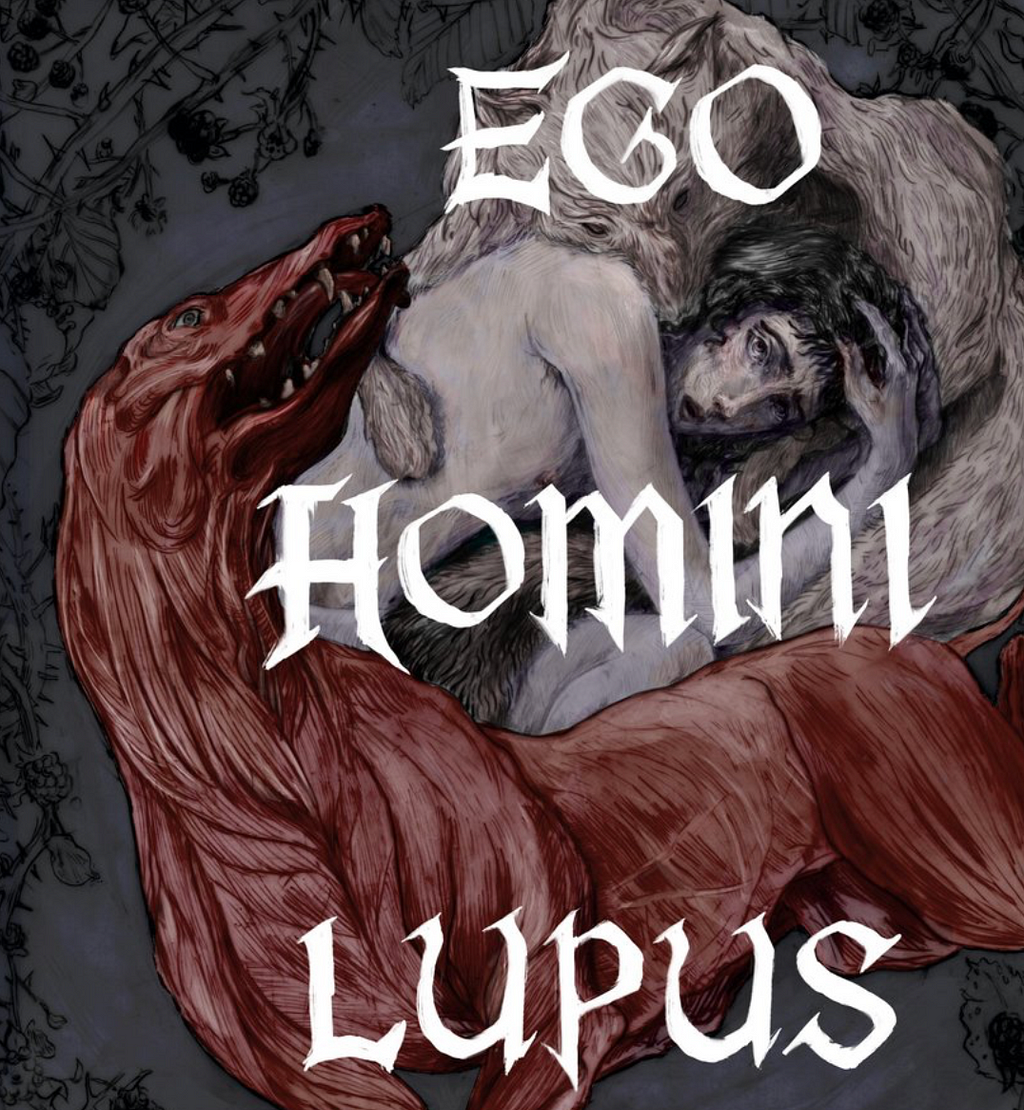Ego Homini Lupus isn’t a book for the squeamish — but it demands to be read, like an ominous chapel of filth built atop a labyrinth of trapdoors.

Gretchen Felker-Martin’s Ego Homini Lupus is a self-described “historical filthcore horror novel” demanding its reader have an iron stomach. Felker-Martin’s depicts the body as a grotesque, beautiful maze, a constant reminder of the violence enacted in a medieval world of unquestioned power. The prose flows like a she-wolf’s blood; the landscape of Felker-Martin’s novel is distraught and soiled by strings of muscle, the dissatisfaction of bodily function, the feral-nature of sex, and the tendrils of the supernatural. Ego Homini Lupusis a dark downward spiral into what lies squirming right beneath our mortal skin.
Joan is a young woman living with her family in a old castle. Married against her will to the knight Arsène, she now must fend for herself a wife, a mother, and companion to Rohaise, Arsène’s sister. After a traumatizing and humiliating ceremony, Joan is sent off to Arsène’s estate, thus beginning a long and brutal cycle of abuse and uncanny encounters with what lurks in the woods.
Trauma in Ego Homini Lupus is embodied in both the allegorical and the tangible, the gory and unsettling wet belly of what sits in the guts of animals and humans in-kind. One of Joan’s first tasks as Arsène’s wife is to tend to the tanning house and mend the pelts wolves. This episode is only one in a series of killings, mending, and nurturing of dead bodies that eventually becomes Joan’s master craft:
“She moved upward toward the skull. Beautifully, in silken folds, the wolf’s skin came away from the raw meat beneath. I look like that, Joan thought, running a finger over the coils of muscle and marbled veins of fat her knife had exposed. Just under the skin. It’s so close. What a marvel.”
Felker-Martin excels in her depictions of the body’s grotesque function — putrid fluids, deformity, and the violent emotional scarring of constant abuse. “Coils of muscles and marble veins” are the tools in which she works in, like a sculptor of the body stripped of its protective exterior. This scene with Joan skinning the wolf is later mirrored, to a surprising realization that it’s “easier with people.” Whatever cruelty the human body is capable of it, it still remains a vulnerable statue of meat and fat.
Ego Homini Lupus isn’t a book for the squeamish — but it demands to be read, like an ominous chapel of filth built atop a labyrinth of trapdoors. Felker-Martin’s grip on her characters is solid, and she exhibits just as much tenderness in brief moments of respite as she does when the supernatural rears its gruesome head. The men in Ego Homini Lupus almost stand as tall as the women, yet always fall short, often through fault of their own and preciousness when it comes to the labor of housekeeping, child-rearing, and the never-ending filth coating the walls of this world’s buildings. Gender is the ultimate divide of Joan’s world, where the physical realities of bodies draw a harsh, inescapable line until they are torn apart limb-by-limb.
Castles and shelters of all kind inherit their own sense of character in Ego Homini Lupus. From the rafters of the tanning shed, to the royal keep of King Henry, interior rooms become the veil in which abuse and humiliation is hidden from the outdoors, from prying eyes. Spaces are built and rebuilt by characters; whether it be a circle of carcasses or an aging home, the permanence of a room is dubious at best. As though what lies in the forest will strike at any moment, that paranormal possessions might ruin what has been built through sweat and blood across generations.
Just as house doesn’t necessarily mean a home, the same can be said for the bodies Felker-Martin’s women inhabit. These women teem with an all-consuming fear of what lies outside four-walls, what cannot be self-contained by brick and wood. The wilderness in Ego Homini Lupusis a site where the supernatural festers like an infected leg, brimming with maggots, human waste, and trees that speak in tongues. But despite this utter filth, there still remains a beacon of Joan’s resilience — as cruel and tragic as it may seem — she herself is the master of undoing bodies. Crying with joy “[i]t’s done, it’s done, it’s done, it’s done,” Joan is a woman who stands in the unsettled remains of the human form, re-shaping it, transforming, skinning, injecting new life in the messy sinews of flesh, challenging the doppelgängers of our nightmares.
Felker-Martin’s previous horror novel, No End Will Be Found,was published by Thuban Press. She collaborated with artist Garrett Young on the comic Skin Deep, and also writes film and television criticism on VRV, FanByte, and on her Patreon. Ego Homini Lupuswill be receiving a print-run later this year and can be currently acquired online. Felker-Martin can be found on Twitter at @scumbelievable.
Doppelgängers of our Nightmares was originally published in Anomaly on Medium, where people are continuing the conversation by highlighting and responding to this story.
